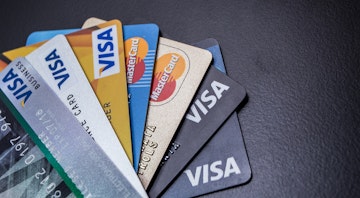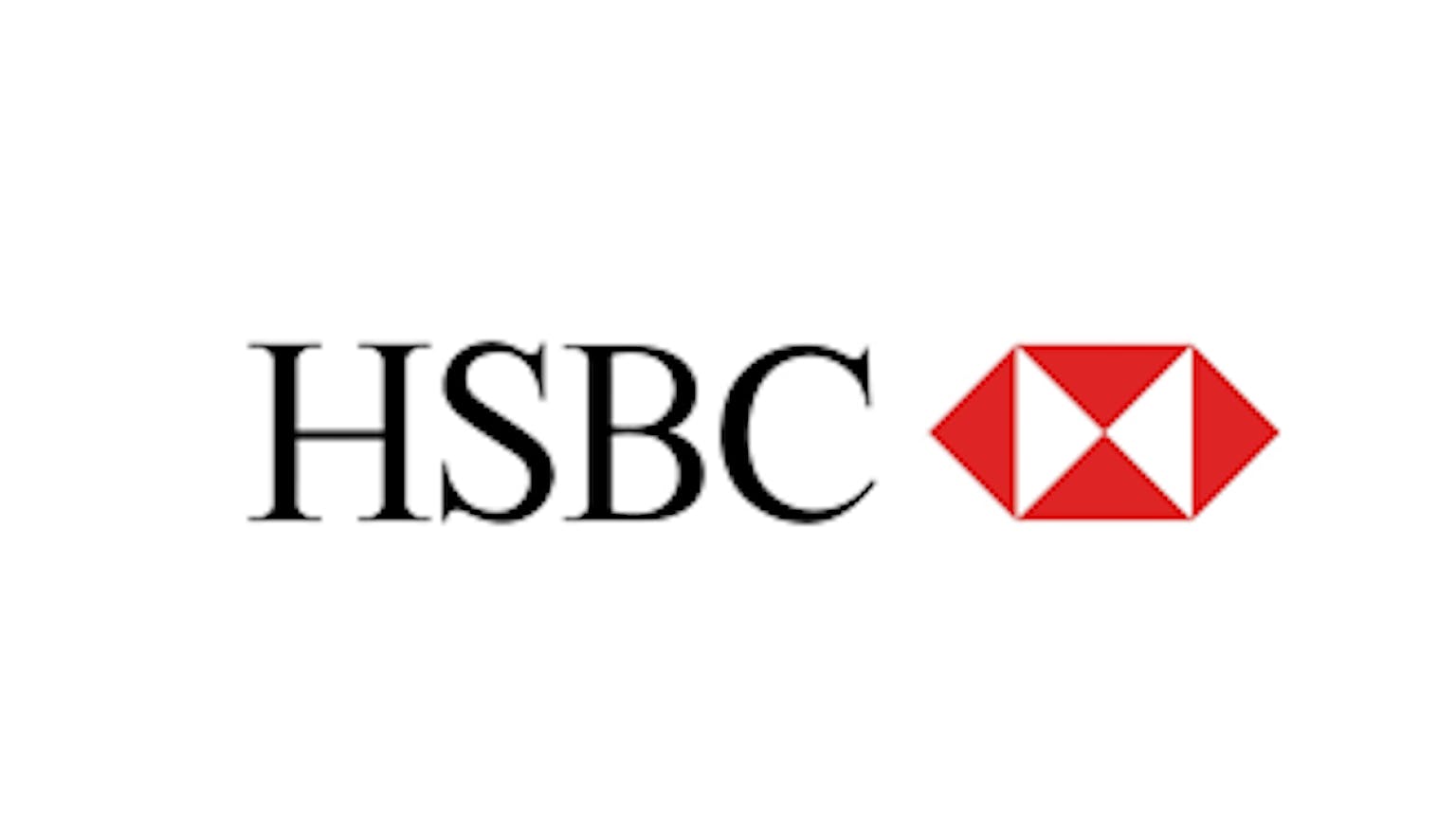There are a plethora of credit card options to choose from. In fact, it may be a bit overwhelming for the ordinary consumer. From the HSBC Advance Visa Credit Card to the BOC Sheng Siong Visa Card, it can be a bit confusing with all the different brands in the same name. Here’s what you need to know about bank-issued credit cards and co-branded credit cards.

Theethawat Bootmata/shutterstock.com
What is a credit card network?

A credit card network is a financial service company that approves, processes, and reconciles payments. The most common examples are Visa, MasterCard, and American Express. These companies facilitate the transactions between merchants and card issuers and receive a percentage transaction known as an interchange or “swipe” fee. Credit card networks do not control fees that a cardholder pays in their terms and conditions, such as interest rates or late fees. These fees are features of your credit card, which are determined by your card issuer.
What is a card issuer?

A card issuer can be a bank or a brand/marketing partner. This is the organization responsible for paying funds when you use the card and issues the card to the customer. For example, a few common bank issuers are HSBC, DBS, and UOB. A few common brands or marketing partners are the Robinsons Group and CapitaMall.
What’s in a name?

Credit cards usually combine a card issuer with a credit card network. For example, the Citi Rewards Visa Card combines the card issuer, Citibank, with the credit card network, Visa. Similarly, the UOB PRVI Miles MasterCard combines the card issuer, UOB, with the credit card network, MasterCard.
Comparing Credit Card Networks

Global Acceptance
Visa and Mastercard are the most commonly accepted credit card networks in Singapore. Most physical retailers will accept both. Furthermore, both Visa and MasterCard have their own forms of contactless payment systems. Visa has the Visa payWave and MasterCard has the MasterCard Masterpass. Most online retailers also have no problem accepting them both.
American Express is not as widely accepted as its competitors Visa and MasterCard. Statistically, American Express is only accepted in about 140 countries versus Visa and MasterCard’s 200+ countries. However, most large retailers, such as supermarkets, department stores, hotels, and chain restaurants will likely accept American Express. This is also true for most online retailers as well.
Promotions
Each company has its own network promotions. However, few people would choose a credit card solely based on their rebates or discounts. In fact, few people even know about them. Personally, I find these promotions negligible compared to the rewards that the credit card itself offers. However, it is worth noting that American Express is widely known to have better deals because it has more exclusive premium membership requirements.
Consumer Protection
Both Visa and MasterCard are secure to use and offer some type of fraud protection. Visa’s chip-activated terminals produce a unique one-time authorization code to protect chip card transactions. Furthermore, cardholders will have to enter a PIN or password to verify their identity, so that the card issuer can confirm the transaction has been personally authorized by the cardholder to go through. Finally, Visa also has CyberSource, a unique payment management platform that enables merchants to accept and manage payments, mitigate fraud, and secure payment data.
MasterCard has liability protection, where you will not be held responsible for unauthorized transactions. Furthermore, they require a Personal Identification Number or PIN to go with your EMV chip to make sure your money is secure. EMV Chip Technology is a microchip in your credit card that safely contains your data and encrypts every transaction you make locally or abroad.
As with its promotions, American Express has a few extra consumer protection perks. One notable feature is the 90-day Return Guarantee that other credit card networks do not offer. American Express will refund your purchase even if the retailer does not. They also have a 90-day Purchase Protection where American Express will repair, replace or reimburse eligible purchases if it has been damaged or stolen within 90 days. American Express SafeKey is an added security layer to safeguard online purchases. You will be required to enter a One-Time Password (OTP) before the transaction will go through. American Express also takes fraud quite seriously. They will monitor your account and if they suspect any unusual activity, they will immediately contact you. Furthermore, you are not liable for fraudulent purchases.
Overseas Usage
Visa, MasterCard, and American Express cards are globally accepted credit cards, although you will need to check specifically if the country you are traveling to accepts the network. As stated before, American Express is accepted in about 140 countries, whereas Visa and MasterCard are accepted in 200+ countries. One thing to check of course are the overseas card fees, such as an overseas transaction fee, which the card network charges and the foreign transaction fee which the card issuer charges.
What are Co-Branded Credit Cards?

Co-branded credit cards are when a brand or popular retailer teams up with a credit card network to bring you their own and exclusive credit card that can only be used with them. You would only get a co-branded credit card with a marketing partner or company that you frequently purchase from. They usually offer special perks and rewards that can be redeemed within their own retail network. For example, The American Express Singapore Airline KrisFlyer Card is one of Singapore’s more popular cards. The card network is American Express. The marketing partner or brand issuer is Singapore Airlines.
Things to Consider

Rewards and Annual Fees
In order to fully take advantage of a co-branded card, you need to spend frequently at that retailer. That being said, do you truly spend enough to offset the time it takes to generate enough rewards? Furthermore, do the rewards expire? For example, it may be more advantageous for you to use a different general credit card for your purchase, and simply redeem the cash back instead of saving up your points on a co-branded credit card. Besides, if your co-branded credit card has an annual fee, do you earn enough rewards to justify having it?
One example for when a retailer-specific credit card is beneficial is when the rewards are better than your general credit card. For example, the American Express True Cashback Card offers a 1.5% cash back on everything. There is no earning cap. On the other hand, if you do your grocery shopping frequently at Sheng Siong, you get 7% cash back for every S$1 spent with the BOC Sheng Siong Visa Card. An additional cash rebate of 5% can also be earned if you achieve the minimum spending of S$400 per month. As a result, financially speaking, it is more advantageous to have the marketing partner’s credit card to go grocery shopping.
Here’s another example of a retailer-specific credit card that does not work in your favor. We know that the American Express True Cashback Card offers a 1.5% cash back on everything and there is no earning cap. The American Express Capita Card lets you earn 10x STAR$ for every S$1 spent at participating merchants at CapitaLand Malls and 3x STAR$ for all other merchants. Everything else earns 5 STAR$ for every S$1 spent. You can convert 50,000 STAR$ to get a S$50 CapitaVoucher, which can be redeemed at the mall. Wow, we have a lot of different denominations.
First, S$1 CapitaVoucher is a 1 for 1 conversion to S$1. 50,000 STAR$ can be redeemed to get S$50 CapitaVoucher. That means S$1 CapitaVoucher is equal to 10,000 STAR$. At the highest earn rate, you can get 10 STAR$ for every $1 spent. Therefore, in order to get 10,000 STAR$, you need to spend S$1,000. In other words, you need to spend S$1,000 to get S$1 CapitaVoucher. That’s an earn rate maximum of 1%. After all this, my American Express True Cashback Card gives me 0.5% more cash back, and I don’t need to convert it twice.
Higher Interest Rates
Most co-branded credit cards carry higher interest rates than general credit cards. They do this so that they can approve less than perfect credit scores and increase their number of customers. Therefore, be sure you can pay your balance in full and on time to avoid the extra costs, including any late payment fees.
Final Thoughts

The main benefits of having a credit card are the rewards, the convenience of being cashless, and the high spending limit. However, it is important to choose the best credit card for you. Each credit card is an additional responsibility. With all the different credit card networks and credit card issuers, you can definitely find a credit card that fits your financial needs. Go ahead and compare a few different credit cards by looking at the reward earn rates, the annual fees, the current welcome bonus, and the overseas charges, if you’re planning on traveling abroad. Always spend responsibly. Happy shopping!





















Please leave your knowledge and opinion!